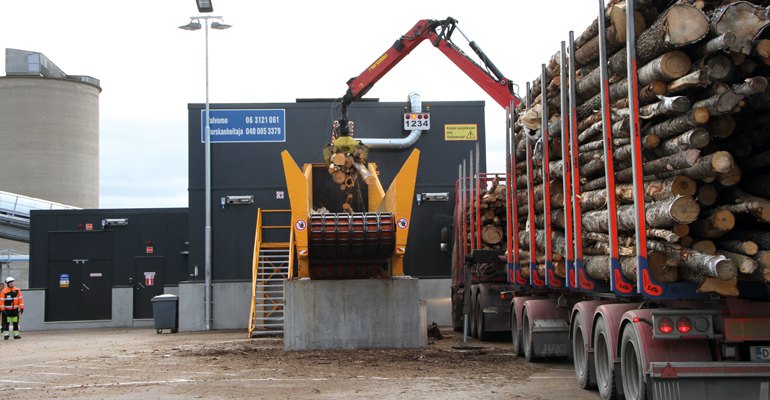A new solution for biomass logistics has reduced the cost of fuel handling by 20-30 percent, and the total cost of biofuel about ten percent making biomass more competitive. Bioenergy International went to Vaskiluoto power plant in Vaasa, Finland to find out more about the experience of the logistics system.

Located in Vaasa on the west coast of Finland, the 560 MW plant is owned by Vaskiluodon Voima, an energy utility owned by EPV Energy and Pohjolan Voima. It uses biomass and coal to generate between 900-1700 GWh of electricity annually. The plant also supplies 450 GWh of district heating to the Vaasa, excess heat from electricity production led to the sea.
In 2013, the world’s largest biomass gasification unit began operations at the coal power plant in Vaasa. The gasification plant, supplied by Valmet, is a cost-effective way to replace coal with biomass in existing coal-fired plants. The investment is lower compared to building a new dedicated biomass plant. It is also an alternative to fitting wood powder burners in an existing coal-fired boiler.
Replace coal
The gasification plant brings 140 MW and replaces about a third of the fossil carbon in the plant. The investment was approximately EUR 40 million, of which the Finnish government contributed just over ten million. The investment included the fuel receiving, fuel handling, drying, gasifier, burners and associated installation work.
The new facility has resulted in reduced carbon dioxide (CO2) emissions by about 230 000 tonnes per year. By replacing imported coal and carbon emission allowances with locally produced biomass fuel, around EUR 15 million is retained in the regional economy.
The investment of EUR 40 million was relatively low to add 140 MW fuel capacity to an existing boiler. I think this is a solution that can be useful for other coal plants, said Janne Österback, Maintenance Manager at Vaskiluodon Voima.
Lower prices
After the investment decision was taken in 2011, both the cost of coal and electricity prices have fallen the cost of using biomass has not decreased correspondingly.
In order to reduce our costs and continue using biomass fuel, we needed to find a way to make fuel logistics more efficient. It was an important reason why we started to plan for a new crusher, a part of the solution we came up with, said Esa Koskiniemi, Fuel Manager at EPV Energy, one of the partners in the power plant in Vaasa.
Planning for new fuel-crusher
CBI Europe, now part of Terex, was contacted in the spring of 2014 to develop a solution, and in October 2015 a new electric stationary crusher to produce chips inside the plant area.

This solution resulted in both a more efficient material breakdown and fuel-efficient logistics.
At first, we considered a solution using a mobile electric crusher that we could move between Vaasa and our other plant in Seinäjoki. But for logistical and noise reasons, we decided to use a stationary crusher in Vaasa, said Esa Koskiniemi.
Noise reduction
We planned the crushing plant to meet to meet the requirements for noise, capacity, fuel quality and electricity demand per tonne chips. The location of the crusher required a separate analysis because there are summer residents less than a kilometre from the power plant. The crusher was therefore built into sound absorbent housing and placed with the in-feed facing away from the area with summer visitors, explained Laurens Veer, General Manager, CBI Europe.
The new receiving station has been in operation for over a year since Bioenergy International last visited.
We are very pleased with the crusher, production capacity is very good in our experience. It provides at least 400 m3 per hour, noise measurements show that levels are within stipulated regulations and the crusher produces a P63 fuel quality, remarked Esa Koskiniemi.
Less waiting time
The past month the crusher has produced 55 GWh of fuel. This is equivalent to 20 trucks per day every day of the week. Fuel reception is done by the truck pulling up alongside the intake table and unloading the logs directly into the crusher, which takes about 20 minutes. Click here to continue reading the article.


